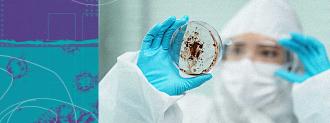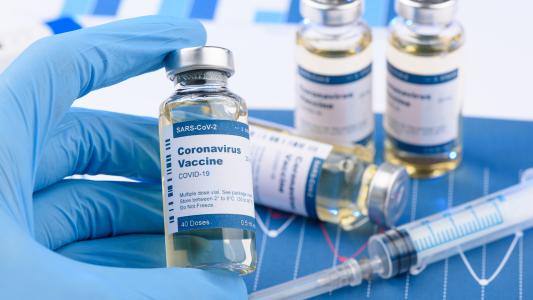The coronavirus spread across the globe in just a few weeks, killing more than 100,000 people and infecting over two million. While the virus has spread quickly a timeline of the coronavirus solutions shows scientific breakthroughs and innovative measures taken to control the pandemic are spreading equally fast. From developing new vaccines to hand sewing protective masks — people are stepping up in ways, large and small.
Here is a timeline of the coronavirus response efforts:
December 21, 2019: Chinese Health officials informed the World Health Organization of a mysterious pneumonia-like illness infecting 41 patients. On January 7, 2020, they identified the pathogen as a novel coronavirus.
January 30, 2020: For the 6th time in history, the WHO declares a global public health emergency.
February 5, 2020: Robots step in to lend a hand at busy hospitals fighting coronavirus. With hospitals overcrowded and not enough staff to support the patient’s needs, one China ward launched an experimental program where robots took care of 200 patients, 24/7. They cleaned floors, delivered food, and even boosted morale by helping patients exercise or dance. By the end of March, Spain deploys a fleet of robots to help with coronavirus testing. Reportedly able to test at 4 times the current rate, these robots will minimize healthcare employee’s chance of exposure. Spain is currently conducting between 15,000 and 20,000 COVID-19 tests daily.
February 7, 2020: Dr. Li Wenliang, a Chinese doctor and whistleblower, dies of coronavirus. Hailed as a hero, Wenliang tried to warn the public about the deadly new disease but was reprimanded by the authorities.
February 19, 2020: Researchers create a 3D map of the coronavirus spike protein, an important first step toward creating a vaccine.
February 25, 2020: In Seattle, Dr. Helen Y. Chu defies government orders and begins testing samples from a flu monitoring program for coronavirus. She rapidly identifies cases of community spread in Washington state.
February 28, 2020: The University of Washington launches a coronavirus version of the protein folding game called Foldit. The game tasks players with creating a protein that can interact with another protein in a specific way, like binding to the coronavirus’s “spike protein.” The spike protein is instrumental in the virus’ ability to infect human cells. Finding a protein that could interfere with that ability could help find a vaccine.
March 4, 2020: The Japanese pharmaceutical company Takeda announces new research on a treatment for coronavirus. Takeda hopes to use blood antibodies from people who recovered from coronavirus to create a drug that will fight it off.
March 6, 2020: The U.S. opens its first drive-thru coronavirus test clinic in Seattle, WA. Washington state has more COVID-19 cases than anywhere else in the U.S., giving the University of Washington Medicine system a key role in stemming the outbreak. They will use the drive-thru clinic to test symptomatic staff members through their open car windows.
March 10, 2020: Researchers identify 77 potential drugs for fighting COVID-19 using the world’s fastest supercomputer. By racing through simulations that would take most computers months, Summit, the U.S. Department of Energy’s Oak Ridge National Laboratory supercomputer, found drugs that could bind to the COVID-19 structure in a way that could block its ability to infect the human cell.
March 11, 2020: WHO declares the outbreak is a pandemic.
March 11, 2020: The Gates Foundation funds a coronavirus test kit project. The project will provide people of Seattle, a hotspot for coronavirus in the U.S., with at-home test kits.
March 15, 2020: To keep the virus from spreading to new communities, the CDC issues a warning against gatherings larger than 50 people. More conferences, festivals, sporting events, etc. are canceled or postponed. Just 10 days later, Japan announces the summer Olympics will be postponed. Countries like Canada and Australia had already pulled out of the event.
March 16, 2020: The first phase of a coronavirus vaccine trial is launched in humans. Since then, the search for a vaccine or drug treatment has exploded.
March 17, 2020: Many stores begin holding special shopping hours for the elderly, who have a higher risk of dying if they catch coronavirus.
March 18, 2020: By now, the private sector is actively involved in the fight against coronavirus. The conglomerate that owns Louis Vuitton, Dior, and other brands announces they will begin manufacturing hand sanitizer. Amazon prioritizes receiving household essentials and medical supplies into their fulfillment centers, and governments ask private industry, such as Rolls Royce and G.M., to contribute to the fight against coronavirus by making ventilators.
March 21, 2020: The White House announces that U.S. companies, including GM, Hanes, and Los Angeles Apparel, are repurposing their facilities to make masks, hospital garments, and ventilators, in an increased effort to restock supplies.
March 23, 2020: With overcrowded hospitals, the Navy deploys a hospital ship to L.A. to help non-coronavirus patients, freeing LA-based hospitals to focus more resources on the outbreak. New York state confirms 21,000 cases of coronavirus, making it the biggest hotspot of the virus in the U.S.
March 23, 2020: A team of physicians designed a low-cost ventilator to help patients with COVID-19 who have a difficult time breathing on their own. Hospitals in coronavirus hotspots are experiencing a shortage of ventilators and other critical supplies.
March 24, 2020: U.S. agencies announce a collaboration on wide-scale 3D printing of ventilator parts and medical supplies. The FDA’s emergency use authorization is just one way it’s attempting to address the shortage of available ventilators and medical supplies in the U.S.
March 25, 2020: New York University is letting its class of 2020 medical students graduate three months early — as long as they agree to join the local workforce. More than 30% of the U.S.’s coronavirus cases are in New York City.
March 26, 2020: 1 in 2 Americans are on lockdown, and 22 states have a stay-at-home order. The U.S. becomes the country with the highest number of confirmed coronavirus cases, passing Italy and China.
April 2, 2020: The private sector continues to step into new roles: Bloom Energy, who typically manufacturers fuel cells, begins refurbishing ventilators in California. Now individuals can help too through Montreal General Hospital Foundation’s ventilator design challenge.
April 1, 2020: Big tobacco steps into the COVID-19 fight by announcing they are making progress in the development of a plant-based coronavirus vaccine. British American Tobacco announced their vaccine is undergoing testing. If the tests are successful, they could start manufacturing the vaccine in June.
April 6, 2020: A group of researchers launches a website to provide evidence for N95 mask decontamination. As hospitals are running out of personal protective equipment, healthcare providers have little choice but to reuse protective masks, which are intended to be single-use. This website will collect the latest research on mask decontamination.
April 7, 2020: The diagnostics company BillionToOne announces a new coronavirus test that could test a million people per day. Doctors are running out of the chemicals needed for COVID-19 tests. As a result, only about 2 million people were tested between January 18 and April 8, just .6% of the population. Rapid and copious testing could help curb the spread of coronavirus.






